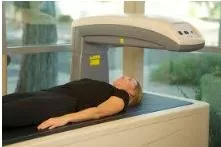Understanding the Benefits of a Bay Area DXA Scan
In the evolving world of health and fitness, precise data plays a pivotal role in customizing wellness plans. One tool that has gained significant attention for its accuracy and reliability is the bay area DXA scan. Often referred to as the gold standard in body composition analysis, a DXA (Dual-Energy X-ray Absorptiometry) scan offers individuals in the Bay Area a detailed and insightful look into their health beyond the scale. Whether you’re an athlete tracking performance metrics or someone embarking on a wellness journey, understanding how a DXA scan can benefit you is essential.
What Is a DXA Scan?
A DXA scan is a non-invasive, quick, and painless procedure that measures bone mineral density (BMD) and body composition, including fat mass, lean muscle mass, and visceral fat. Unlike traditional methods such as BMI or calipers, which can be imprecise, the Bay Area DXA Scan utilizes low-dose X-ray beams to deliver detailed, accurate results.
The scan typically takes about 10 to 20 minutes and provides a full-body breakdown of fat distribution and muscle mass, helping health professionals tailor fitness or nutrition plans more effectively. It is often performed at clinics or fitness centers equipped with the required technology.
Why Choose a Bay Area DXA Scan?
The Bay Area is known for its focus on advanced wellness practices, and the demand for data-driven health assessments has made the bay area DXA scan highly popular. Here are a few reasons why it’s becoming a go-to service:
- Precision and Accuracy: DXA scans are FDA-approved and offer unparalleled accuracy when it comes to tracking body composition over time.
- Progress Monitoring: For individuals on a fitness or weight-loss journey, tracking changes in muscle and fat distribution provides better insight than relying solely on a scale.
- Health Risk Assessment: The scan measures visceral fat, which surrounds internal organs. High levels of visceral fat are linked to serious health issues like diabetes, heart disease, and metabolic syndrome.
- Bone Health Monitoring: For aging individuals or those at risk for osteoporosis, a DXA scan can detect early signs of bone loss.
- Tailored Fitness Plans: Trainers and nutritionists use scan results to craft personalized programs that reflect a client’s real-time body metrics.
How the Scan Works
During the procedure, the patient lies flat on a scanning table while a mechanical arm passes slowly over the body. It emits a small, safe amount of radiation to capture internal images. The software then analyzes these images to determine different tissue types and quantify them into meaningful data.
The scan outputs include:
- Total Body Fat Percentage
- Lean Muscle Mass
- Bone Mineral Content
- Regional Analysis (arms, legs, trunk)
- Visceral Fat Assessment
This granular data is displayed in visual maps and tables, allowing both patients and professionals to interpret and act on the results effectively.
Who Should Get a DXA Scan?
The bay area DXA scan is ideal for a wide range of individuals. Some of the most common groups include:
- Athletes: To optimize performance by analyzing lean mass distribution.
- Fitness Enthusiasts: To track gains or fat loss during training programs.
- Postpartum Women: To understand postpartum body changes.
- People with Chronic Illness: Especially those with conditions like osteoporosis, arthritis, or metabolic disorders.
- Seniors: To monitor age-related muscle and bone loss.
Even if you are generally healthy, a DXA scan can serve as a benchmark for future health comparisons.
The DXA Scan vs. Other Body Composition Tests
There are many methods available for analyzing body composition, including bioelectrical impedance (scales), skinfold calipers, and hydrostatic weighing. However, the bay area DXA scan outperforms these in several ways:
- Higher accuracy and reproducibility
- Full-body and segmental analysis
- Estimates visceral fat, not just subcutaneous fat
- Medical-grade data used in clinical studies
While other methods are often affordable and accessible, they lack the detail and scientific credibility offered by DXA.
Cost and Insurance Considerations
While some health plans may cover DXA scans for bone density assessment under preventive care, full body composition scans are typically considered elective and are paid out-of-pocket. Prices for a bay area DXA scan can vary based on the provider but generally range from $70 to $150 per session.
Many clinics offer packages or discounts for repeat scans, which can be a smart investment if you’re undergoing a major body transformation or health change.
What to Expect After the Scan
Once you complete your bay area DXA scan, you’ll receive a detailed report outlining all key health markers. Professionals often review this report with you, highlighting areas of improvement and helping set goals for future scans. Based on your health objectives—be it fat loss, muscle gain, or improved bone density—you can then create a plan with your trainer, dietitian, or doctor.
It’s recommended to repeat the scan every 3–6 months if you’re actively working toward fitness or health goals. This allows for adequate time to see measurable results and adjust your regimen as needed.
The Role of DXA Scans in Preventive Health
In a world where preventive care is gaining momentum, tools like the bay area DXA scan are playing a pivotal role. Rather than waiting for symptoms or illness, individuals can proactively monitor their health and make informed decisions. For instance, early detection of low bone density can prompt timely intervention, reducing the risk of fractures and falls later in life.
Similarly, identifying high levels of visceral fat allows individuals to tackle metabolic risks through changes in lifestyle, diet, or medical intervention.
Choosing the Right Bay Area Facility
When selecting a provider for a bay area DXA scan, consider these factors:
- Certified Technicians: Ensure the scan is performed by trained professionals.
- Equipment Quality: Modern, calibrated machines provide more accurate readings.
- Comprehensive Reports: Some facilities offer professional consultations as part of the service.
- Reputation and Reviews: Look for centers with positive reviews and clear pricing policies.
Many top-rated wellness centers and sports performance clinics in the Bay Area offer DXA scanning as part of their integrated health services.
Conclusion
Whether you’re looking to optimize your fitness journey, prevent chronic illness, or simply understand your body better, a bay area DXA scan offers a powerful and precise way to do so. This advanced tool provides more than just numbers—it provides clarity, direction, and motivation. In a region that values innovation and wellness, taking charge of your health with a DXA scan is not just a trend—it’s a smart move for long-term well-being.







